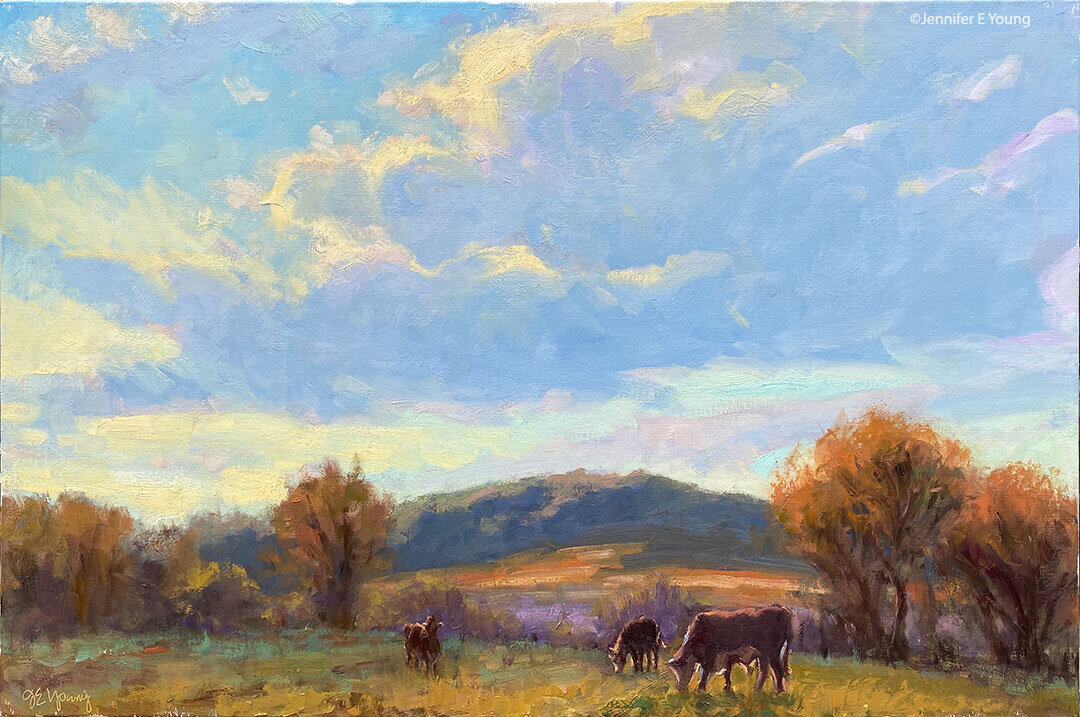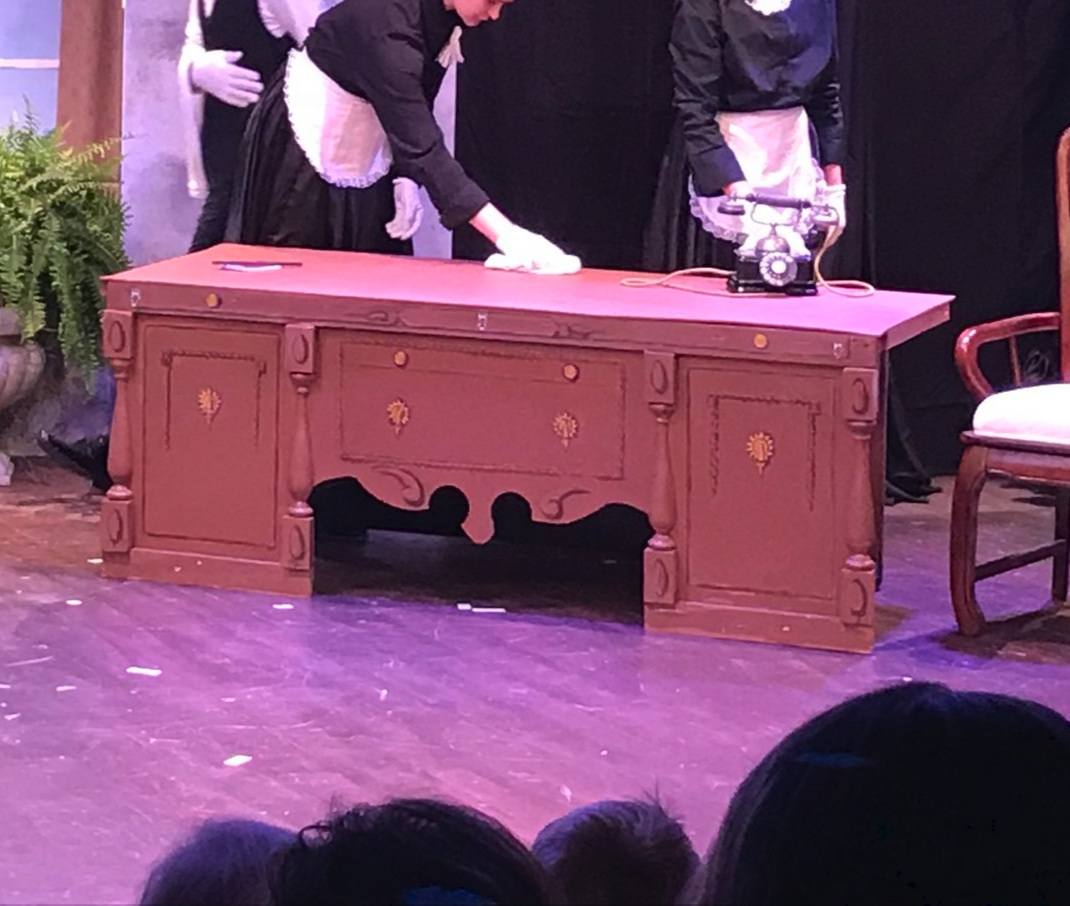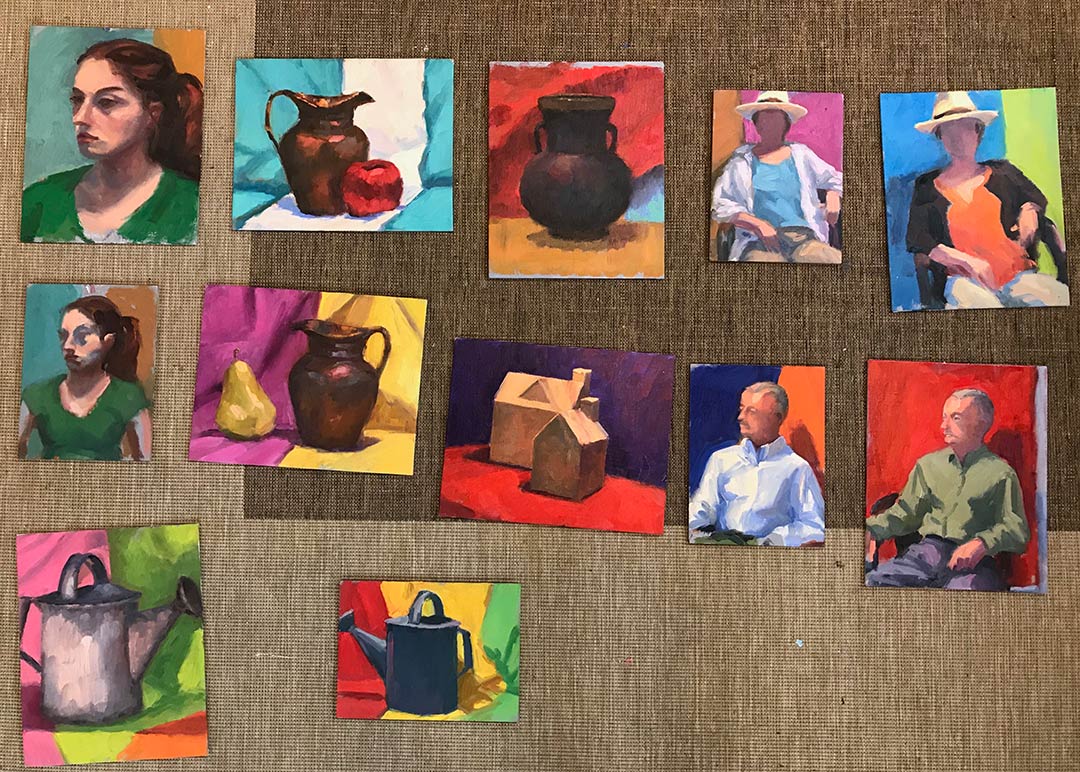La France Profonde- countryside painting (wip)
/Time was of the essence during this painting holiday. While not overrun with museums, there are so many living, breathing, and lovely places to experience in this area. What I mean by that is that this region is considered by many to be "La France Profonde". What I mean by THAT is that the Lot and the Dordogne embody so many of the characteristics of what one would think of as truly and profoundly French. The production of their food and wine, farming, and, well, their manner of living, is still very much practiced in traditional ways. Yes, there is a lot to see, (chateaux, winding and ambling river valleys, lovely medieval villages, and of course French markets and shops). But this is a place to be experienced.
There were a thousand potential paintings right around the old convent where we stayed. So to make the most of our time, we decidedto paint the sunrise. We got up extra early and headed out to paint a lovely sheep pasture that had been spotted by a the "early morning walkers" in our group. Only, there was no sun to be seen. Instead, (and even better) there was the most beautiful soft fog lifting off of the grass:

Work in Progress (as yet untitled) Oil on Linen, 11x14"
When we set up to paint, we had a couple of dilemmas. The sheep were in the neighboring pasture. But who could resist painting this little chateau? No problem. We'll just paint the chateau and move to the next pasture to add the sheep. (Hey, that's the beauty of being an artist, right?)
The other challenge was the that we knew this etherial effect of fog would soon burn off, so we had to work quickly to capture what we saw as best we could, alla prima. Actually, the opposite happened. Instead of lifting off, the fog actually settled in thicker, nearly obscuring the upper part of the hillside trees.
This was as far as I got. It's almost there but I feel there are some areas that need to be resolved, like the foreground and the area just above the chateau. I'd also like to develop a bit more surface texture. The trick will be not to lose the freshness that is so characteristic of plein air painting. We'll see.
In any event, one bonus for us is that the sheep actually (eventually) decided to head over to the pasture with the chateau. Those critters can move, so you never know which way they're going to head. But we got lucky. Merci les moutons!



























